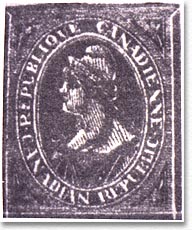
In the report of the Citizens' Forum on Canada's Future (1991), Keith Spicer suggested that the symbols of Canada are in need of some renovation.27 In this connection, it is worth pointing out that one of the general conclusions of recent work in Canadian labour and working-class history is that the working-class experience forms one of the unacknowledged sources of achievement and solidarity in Canadian history. It is one of the unifying identities that has the potential to counteract the enormous pressures towards the privatization of public life in this country.28 Certainly greater attention to the history of workers and the role of labour falls within the present terms of reference and guidelines of the Canada Post stamp programme and should be considered a legitimate subject for the attention of the Stamp Advisory Committee.
A more theoretical observation can also be advanced from the perspective of a cultural history which attaches some strategic significance to the accumulation of cultural capital of the kind embodied in the public imagery and symbols of a society. The investment in cultural capital, it is argued by theorists such as Pierre Bourdieu (who is being paraphrased here), produces returns that bear directly on the balance of forces in the class struggles of the late 20th century. Because the structure of class relations itself is defined by the distribution of capital of various kinds, including cultural capital, working people have a continuing stake in the struggle over the appropriation of cultural goods and practices.29
An agenda for the more prominent inclusion of workers within a renovated Canadian identity will not lack suggestions. Obvious subjects might include highlights in labour history such as the Trade Union Act (1872), Labour Day (1894), the Winnipeg General Strike (1919),30 the On-to-Ottawa Trek (1935), the Ford Strike (1945), and the Asbestos Strike (1949). There are big themes such as railway construction, the industrial revolution and child labour, reforms such as workers' compensation, minimum wage, and equal pay laws, organizations such as the Knights of Labour and the Fishermen's Protective Union - and more. And there are appropriate individuals connected to working-class causes such as Katie McVicar, Phillips Thompson, Ginger Goodwin, J.S. Woodsworth, and J.B. McLachlan. An interesting proposition for Canada Post, and one that might be of some interest to philatelic specialists, would be to reproduce one of the proposed postage stamps for the Canadian Republic prepared (but never issued) by the Provisional Government of the Red River in 1870.31
One of the postage stamps proposed for the Canadian Republic, but never issued by the Provisional Government (Louis Riel) of the Red River in 1870.
Private collection
|
 |
Such efforts would certainly need the support not simply of the Canadian Committee on Labour History, which at its 1996 meeting passed an appropriate resolution encouraging Canada Post to direct more attention to workers and unions in the selection and design of stamps. They would also need the support of union members, their unions, labour councils, federations, and congresses. Certainly there are signs that organized labour is aware of the opportunity to assert the working-class presence in the form of messages on metered postage. In 1995 the postage meter at the Saskatchewan Federation of Labour was conveying its own customized message: "Labour is the Great Producer of Wealth - It Moves All Other Causes."32
|



